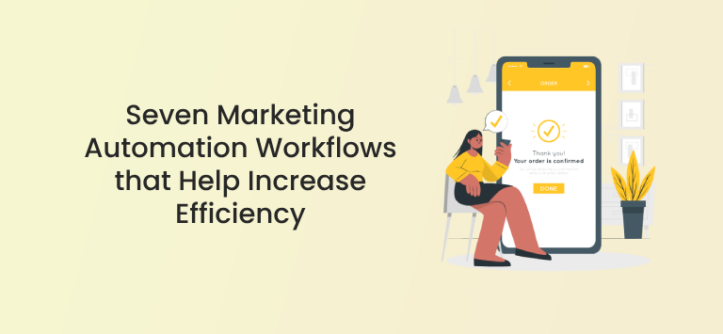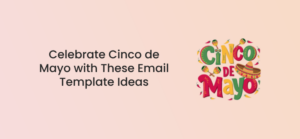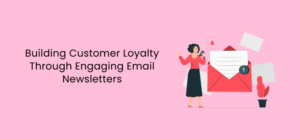Effective marketing strategies exist to increase sales, by amplifying the reach of marketing campaigns and raising brand awareness. But great marketing teams also aim to achieve all of this without inflating their workload. The answer is to leverage marketing automation workflows.
Whether you opt for automation to increase engagement, reduce cart abandonment, or update potential customers about special offers, events, and news, automation can reduce repetitive and time-consuming work for your team. It can dramatically streamline how you reach your target audience, and help build a great customer journey on autopilot.
What are marketing automation workflows?
A workflow is simply a sequence of activities that aims to achieve a particular goal.
Automating parts of any workflow can save significant time and money. Marketing automation workflows mean using software to perform certain tasks, such as sending a thank you email to customers who have made a purchase.
Additionally, social media automation plays a vital role in streamlining marketing efforts, ensuring consistent posting schedules, and engaging with your audience effectively. With the increasing popularity of platforms like TikTok, it’s essential to leverage automation tools that facilitate tasks such as searching for people on TikTok, managing content delivery, and analyzing performance metrics.
Most companies use some form of email campaigns to drive conversion rates. Setting up a marketing automation workflow can greatly impact sales, as automating tasks as part of an email marketing strategy can be time-saving and efficient. It can free up the marketing team to focus on what they do best, designing a great customer journey, rather than individual repetitive tasks.
Instead of copying, pasting, downloading, and uploading data across different devices, automated workflows can collect it all on one machine. Teams can use device remote access to manage that machine or fully automate syncing between their devices and one source of truth.
Setting up a marketing automation workflow
However, handing over responsibility of even the most basic of tasks to a program means knowing your customers and business inside out.
Segmenting your email list according to buying habits, average spend, location, and demographics, can help you personalize the content each customer receives. Knowing consumers’ habits and interests enables you to predict their future purchase intentions and better target your emails.
If you’re a B2B software company, some customers will have the skills to install software themselves. Other audience segments will need you to get into their system with remote device management software to install it for them. That’s important to know: your sales team needs to know what the customer needs, and customers need messaging that’s tailored to their needs.
You can also tailor a series of emails tied to specific customer actions with automated workflows. You might set up a message offering a discount to new customers to be triggered each time a customer browses but doesn’t buy or abandons their cart. You can also send welcome and thank you messages when a customer signs up or makes a purchase.
Automated follow-up emails such as these always function better if they are personalized, perhaps by showing the customer’s name where appropriate. Including a clear call to action is also advantageous, as it’s clear what customers should do next.
7 Marketing Automation Workflows
We’ve looked broadly at what automated workflows are within marketing and how they can be helpful. Now let’s look at seven specific examples that will increase efficiency.
1. Engaging new customers, and re-engaging old ones
Engaging with first-time buyers is an important part of creating a great customer experience, ensuring they return to your brand. A welcome email workflow is an easy way to make that first engaging contact after a customer has signed up to your service.

Screenshot taken from brilliant.org email
The aim is to draw the customer further into what your brand has to offer. Start by welcoming them by name, thanking them for their custom, and then show them more. Direct them to your social media posts, signpost them to news and offers, and above all, show them why you are different and better than your competitors. Remember to stamp your brand personality and style over every aspect of your messages.
Automation workflows can really help reengage with customers who haven’t interacted with your business for a while and win back inactive subscribers. But it’s important to strike a balance with contacting customers. People have busy lives, and nobody likes to be pestered, but it’s reasonable to set a certain period of time on inactivity and for this to trigger sending a message to their email address. The standard seems to be around a couple of months.
It’s a good idea to offer some kind of reward when you do contact customers. A discount or special offer or shiny new products. A friendly, encouraging message that shows you value the customer and have missed their custom is also a winner.
Some customers, of course, choose to unsubscribe from your email list, it can be worth encouraging them back without being pushy. Often companies take the approach of sending re-engagement emails to unsubscribed customers, in effect starting afresh with them and enticing them in as if starting the customer lifecycle all over again.
The example below from Amazon’s audiobook platform Audible shows the kind of special offer likely to tempt a churned customer back. The audiobooks on offer here can be personalized to the customer’s taste, making it even more appealing.

Screenshot taken from Reddit
2. Replenishing subscriptions
Replenishment is relevant for any products or services that tend to run out, expire or have other time limits. For example, food and other consumable products, subscriptions to services or publications, or health and beauty appointments.
An automatic reminder in advance of when the expiry date for the product is due, can jog a customer’s memory and encourage reordering. As with any message of this kind, the language should be encouraging and friendly, and should highlight the quality and desirability of the goods or services.
3. Upselling and cross-selling
Upselling means encouraging customers to buy a similar but upgraded, more costly version of a product they have already purchased. Cross-selling, on the other hand, is persuading them to buy a related product, such as garden tools, if they have just purchased a lawn mower.
Both upselling and cross-selling can be encouraged very effectively with an automated workflow, freeing your sales team to focus on the highest-value buyers. With an existing customer who has made a recent purchase, your business already has a head start. It only takes a pop-up or email signposting them to similar or more high-end items to encourage another sale.
4. Abandoned cart emails
Cart abandonment is a big issue for online traders. Automation can address this in a two-fold way. Firstly with cart abandonment popups, which can immediately prompt the customer as they navigate away from the sales screen, and secondly, with an email that arrives in their inbox.
It’s important to make sure the content of the email contains convenient links to make carrying out the purchase simple. The wording should also be friendly and encouraging, a gentle reminder that the desirable item is still waiting ready to be sent out. It may also help to offer an incentive such as a time-sensitive discount or special offer.
5. Special occasions
Wishing your loyal customers a happy birthday or happy new year is a way of showing that your brand values and appreciates them. It’s also a way to cleverly match products to particular celebrations or seasons. For example, you might highlight your brand’s range of party decorations, festive food or luxury treats.
Having information about your customers stored means that you can automate these messages and even match the products or services you signpost them to, to their buying habits and interests.
Another function of these messages is to simply remind your consumers that you are there, that your brand has something to offer, and that you want to stay in touch.
Many birthday messages also carry a gift element, which can help encourage customers to buy. See the example below from natural cosmetics and beauty brand The Body Shop.

Screenshot taken from thebodyshop.com email
6. Keeping customers in the loop
Communicating with customers doesn’t only have to mean talking about your brand. It’s good to show that you’re well-informed and up-to-date on industry news. Newsletters can highlight launches and events within your business, but they can also be used to share relevant content about your sector that may help or interest your consumer base.
A well-crafted newsletter can position your company as a market leader, and demonstrate that you are across all aspects of your segment. Newsletters are a great way to share genuine industry news, but also, subtly, to showcase your products and services in relation to news items.
For maximum impact, newsletters can be automated to go out at times when consumers are more likely to be interested or have time to read them, such as in the evenings or on weekends.
For example, the MIT Technology Review’s “The Download” comes in daily and weekend editions, so readers can receive emails on whatever schedule suits them.

Screenshot taken from technologyreview.com
7. Encouraging reviews and feedback
It’s always advantageous to get customer feedback and track customer satisfaction metrics.
Automated workflows can be set up to ask customers to complete short surveys, post reviews and send comments.
Like every other communication you have with customers, try to incentivize your request. Don’t make surveys too time-consuming or difficult to complete, and express gratitude for customers’ input.
Let customers know what is expected of them, how long the survey might take, and send them a non-intrusive reminder if they fail to complete it. Here’s a good example from the privacy software provider Proton.

Screenshot taken from protonmail.com email
Workflows that work
The right technology allows a business to work smarter, not harder. From remote manager software to chatbots, online firms can communicate and interact with customers more easily and efficiently than ever before.
But marketing automation workflows offer something else, they allow automated communication to feel personal and perfectly timed, engaging, and inspiring. Workflows can free up your marketing team to do what they do best, target, create, and innovate, leaving automation to carry the heavy load.




